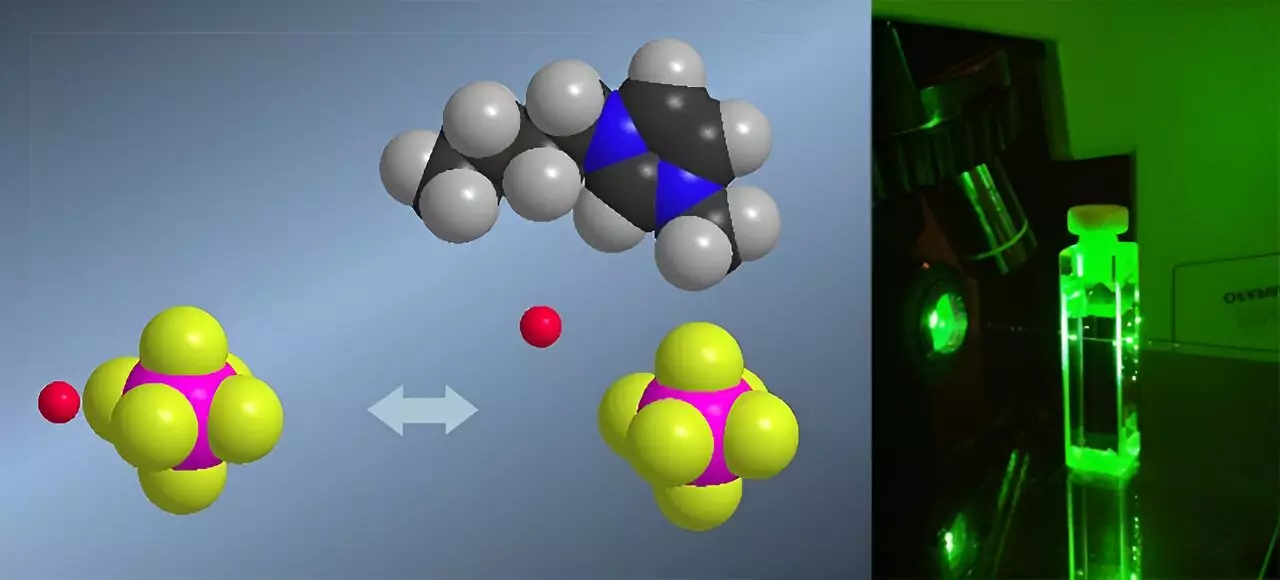Understanding acidity within unconventional solvents such as ionic liquids opens an array of possibilities for scientific and industrial advancements. Traditionally, measuring pH in these media has been a formidable challenge due to their unique properties. Typically, acidity is gauged via Hammett acidity functions, which rely on UV-visible spectroscopy—a method riddled with limitations like optical opacity and interference from colored indicators. However, recent strides by researchers at the University of Liège have introduced a transformative technique: Raman spectroscopy. This innovation circumvents previous technical constraints, providing a more precise and versatile way to probe the protonic landscape of ionic liquids. The significance of this development surpasses mere technical achievement; it signifies a paradigm shift in how we understand and exploit these complex solvents.
The Intricacies of Ionic Liquids and Their Exceptional acidity
Ionic liquids distinguish themselves from aqueous solutions through their remarkable acidity and structural composition. Comprising organic salts that remain liquid at room temperature, they exhibit significantly lower proton solvation. This peculiarity renders protons within ionic liquids far more active, resulting in acidity levels that far exceed those in water—sometimes up to 100 million times stronger. These attributes are not just academic curiosities but have profound implications for catalysis, energy storage, and biomass processing. Despite their promising applications, the inability to directly measure their acidity using conventional pH scales impeded progress. The development of the Hammett acidity function was a step forward but was hindered by the limitations of UV-visible methods, which demand transparent media and can be affected by the ionic liquids’ inherent optical properties. Enter Raman spectroscopy—a technology that provides molecular insights without the need for optical clarity or extraneous indicators.
Raman Spectroscopy: A Quantum Leap in Chemical Analysis
The crux of this breakthrough lies in Raman spectroscopy’s capacity to detect vibrational modes within molecules, capturing the subtle energy shifts associated with proton transfer. Aurélie Rensonnet and her team at the University of Liège demonstrated how this method accurately measures Hammett acidity functions in ionic liquids based on 1-n-alkyl-3-methylimidazolium cations paired with bistriflimide anions. The process involves illuminating the samples with a laser and analyzing the scattered light to determine the degree of proton activity. Unlike UV-visible techniques, Raman spectroscopy does not require optical transparency or colorful indicators, thereby eliminating significant sources of error. This methodological refinement lends itself not only to more accurate acid measurement but also to real-time, in-situ analysis of complex chemical processes—crucial for advancing catalytic reactions, electrochemical systems, and biomass depolymerization processes.
Implications and Future Promise
By harnessing Raman spectroscopy to quantify acidity with precision, researchers unlock a treasure trove of possibilities. For instance, understanding how protons transfer between water and ionic liquids allows scientists to better model and predict reaction kinetics in super-acidic environments. This insight directly aids in designing more efficient catalysts, stable electrolytes for batteries, and sustainable methods for biomass conversion. Furthermore, this technique enables a synergy with computational chemistry, providing empirical data to refine theoretical models of ionic media. As the technology and understanding evolve, the industrial applications promise to be transformative—ushering in new generations of chemical processes that are more efficient, greener, and adaptable to emerging energy and environmental needs.
This pioneering work not only advances our scientific comprehension but also positions Raman spectroscopy as a vital tool for future innovations in chemistry and materials science. Its ability to clarify the intricacies of ionic liquids’ acidity catalyzes a new era of research with potentially far-reaching impacts.

